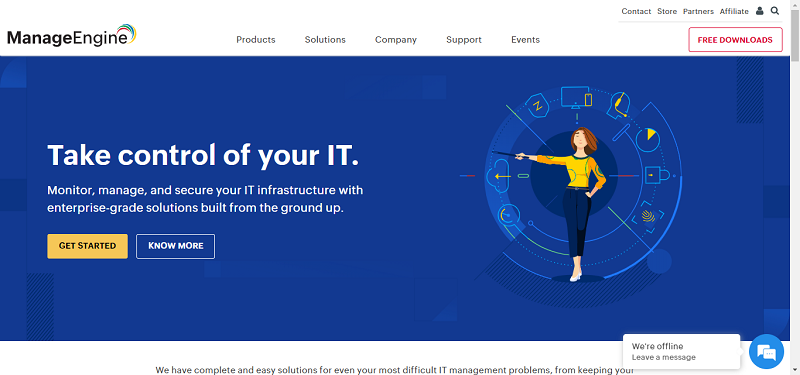Cloud software has grown in recent years because it eliminates some major administration headaches for IT staff and provides access to applications from browser-enabled devices including PCs, Macs, tablets, and mobile phones.
One common business question is whether to host their new cloud applications in either single-tenant or multi-tenant mode. This article takes a look at why businesses would want to choose one or the other.
Although the software world, including the ERP sector, is abuzz about cloud computing, it’s not exactly a new idea. The Multics project back in the ‘60s imagined an “information utility” that anyone could access remotely.
In the ‘60s and ‘70s, computing was done on shared mainframes and minicomputers. It was only the early ‘80s when the IBM PC invaded the offices of both large and small companies that business people started to think of computers as truly personal. But as useful as personal computers were, they were isolated from each other. Organizations that tired of people shuffling floppy disks around invested in local area networks to share files, but these introduced their own headaches, requiring businesses to hire specialists to maintain the computer, networks and servers.

After the boom of the World Wide Web in the ‘90s, many businesses thought they could offload some of the complexity to new centralized services that had become available since around 2005, including Google’s apps and Microsoft office 365.
The advantage of these “cloud” services was that the job of maintaining remote machines was left to the providers they’d hired, instead of internal IT workers. Businesses could concentrate on what they actually did best instead of having to contend with email or file storage.
With the growth of cloud services, the computing world has come full circle, going from data scattered around personal machines to centralized systems.
With ERP, a centralized system is a better bet, because ERP has to tie together various different departments, such as management, accounting, supply chain and so on. Once a business has decided to purchase a cloud ERP solution, the selection committee must learn about complexities such as single-tenant and multi-tenant implementations.
A single-tenant solution is a single Instance of a program running for a single company. For example, the Web browser you’re using to read this on your computer would be an example of a single-tenant solution. An example of a multi-tenant solution would be Google’s Gmail, which hosts hundreds of thousands of email accounts in a single application instance.
A cloud application can be single-tenant at various levels: from the operating system, to the machine, to the database, and the application itself.
The main trade-off between single-tenant and multi-tenant solutions is more control on one hand and greater efficiency of resources on the other.
Some advantages of a single-tenant solution:
– Maximum privacy: since there is only one instance for a user, there’s less risk of another business either accidentally or through corporate espionage snooping on data that doesn’t belong to them.
– It’s impossible to affect someone else’s tasks. Single-tenant solutions are more popular with enterprise businesses.
– Jobs with intensive computing requirements can make full use of the system.
The single-tenant mode also has some drawbacks:
– If the client decides to run the cloud on-premise, the client must bear the costs of the whole system alone.
– A single-tenant system is generally more expensive than a multi-tenant solution.
– A single-tenant system is generally not the most efficient use of resources, unless it’s fully loaded.
– For each instance, the underlying software, such as the operating system and runtime libraries, must be updated.
The multi-tenant solution also has some advantages and disadvantages:
– The downside is that a client does not have as much control over the environment.
– The solution is more popular with smaller businesses.
– A multi-tenant solution shares hardware and software costs.
– The software only had to be updated once, instead of multiple times for each instance of a single-tenant application.
– The solution makes maximum efficiency of computing resources, since it is shared among many companies. Most computer systems spend their time waiting for input from the user. Since there are many companies, there is always something for the machine to do. Virtualization also helps accomplish the same goals.
Some ERP systems offer a choice of deployments while others are more rigid in their drive towards efficiency.
No matter what system you end up choosing, the decision of whether to use multi-tenant or single-tenant depends on your business needs and the makeup of your organization. If you are unsure of your long term requirements or growth potential, I recommend selecting a vendor that provides the option to switch as you grow so you do not get locked in to an unfavorable payment model.
By Douglas Johnson





